|
The Airbag's Reaction to Fire
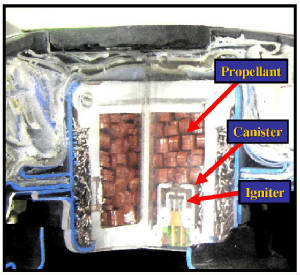
|
| Click picture to enlarge |
In the late '70s and early '80s manufacturers began installing driver's
and passenger's airbags in their new cars. These early airbags all contained pyrotechnic type gas generators, or inflators,
that used Sodium Azide as their propellant.
Sodium Azide is the same solid fuel used to send rockets into space.
At 350 degrees Sodium Azide becomes a rapidly burning fuel that puts off huge amounts
of nitrogen gas to feel the airbag.
With vehicle fire temperatures reaching in the thousand degree ranges, the
airbags are going to deploy. There is no possible way to shut them down, or stop them, as we do in extrication.
How they deploy depends on many uncertain factors that we will look at in this study.
Click on the video below to see an example of what we should see as
a normal deployment.
click here to play video

|
| Click picture to enlarge |
This is what we should see after the fire is extinguished. If the airbag
experiences a normal deployment it will deploy and the nylon bag will melt, leaving the filter screen showing.
Video - This is a good example of what many time even a normal deployment will do
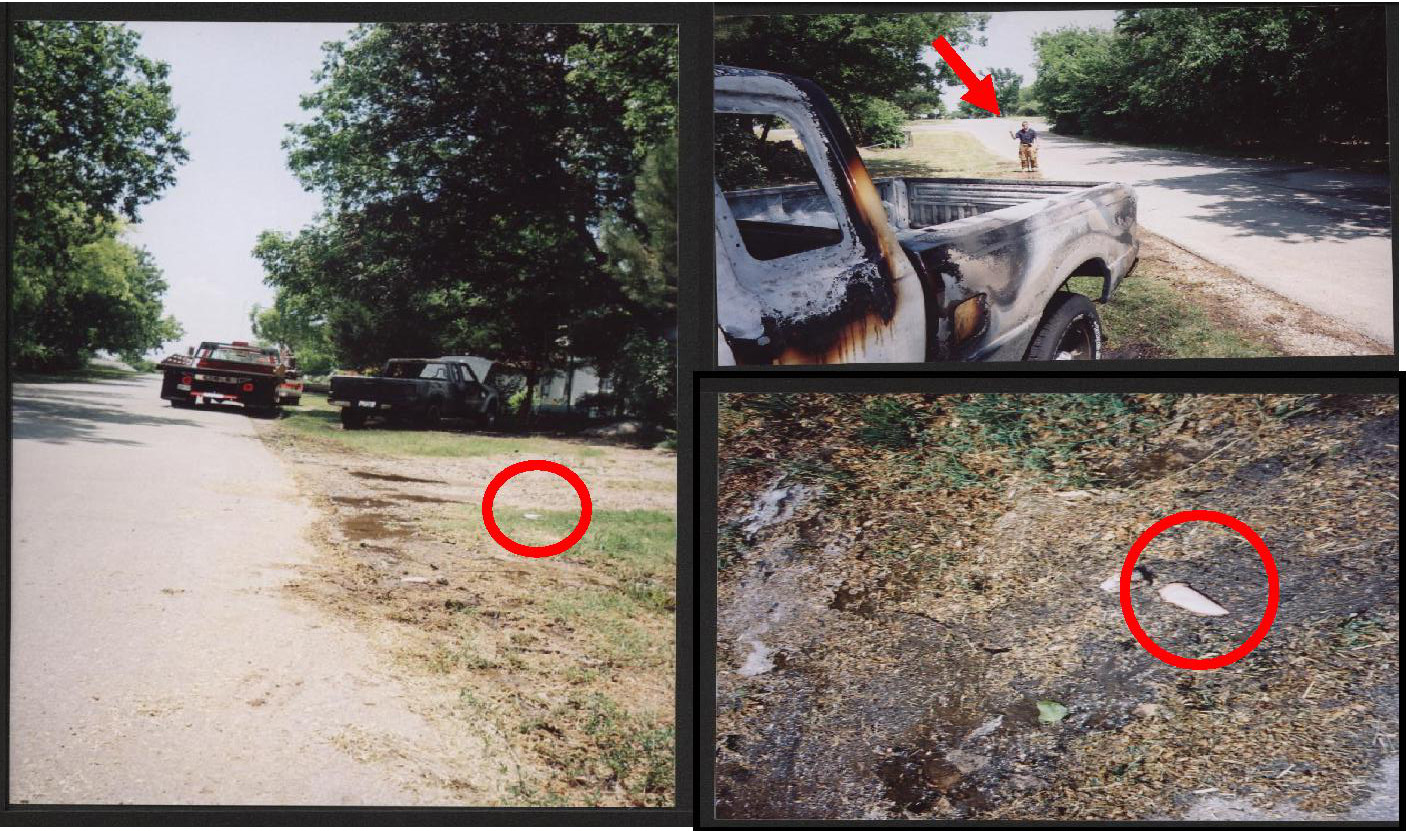
|
| Click picture to enlarge |
A personal experience: In June of 2005, I was the officer
on the scene of a fully involved 2004 ford ranger pick-up and a very large tree over hanging the house. After putting
the fire out, the men being exhausted, laid the hose down and removed their mask. I then assigned two rookie FFs to do
mop up, they took the time to pack out and check each others gear. There were no flames showing for a period of at
least five minutes. As the men opened the driver’s door, two explosions accrued and debris was thrown in all directions,
narrowly missing the firefighters. Both the driver’s and passenger’s airbags had deployed in the mop up stage.
In the investigation we found an 1 ½ x 3 inch piece of the nylon airbag, 47 feet behind the truck.

Warning!
With today's vehicles being equipped with six
to twelve airbags, that we know are going to explode, firefighters should never enter the vehicle with any part of your body
until we know for sure that every part is cooled.
As you can see even a normal deployment can be extremely dangerous.

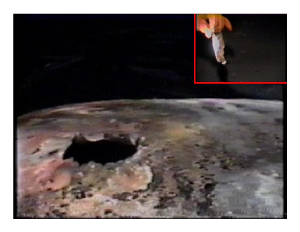
|
| Click picture to enlarge |
Dec. 27, 1997
Denver fire Marshals investigated a vehicle fire involving a 1996 Ford Aspire in
which the airbag did not deploy in the normal manor. Click the link below to see their findings.
click here to play video
Though it is dark, in the video below we can actually see another
airbag and inflator, caught on film, as they explode through the sun roof.
click here to play video
Wednesday, June 11, 2008
-
Upon arrival of a fully
involved vehicle fire, police officers observed the driver side air bag deploy, blowing straight through the windshield and
rose approximately 40 feet into the air. The vehicle involved was a 1995 BMW.
In researching these chemical inflators, I wanted to find out how these housings came loose from the
steering wheel, when they are bolted to the center of the wheel, with four bolts that can normally withstand the pressure
of the airbag deployment. I actually discovered two different situations.
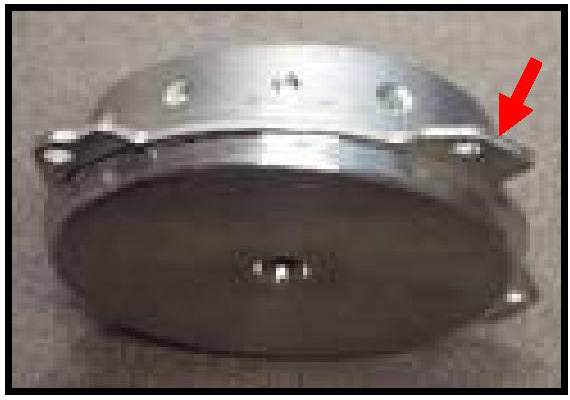
|
| Click picture to enlarge |
1. Some inflator housings are made of aluminum,
with thin mounting flanges extending from the sides. The flanges are then bolted to a bracket that mounts to the steering
wheel hub. The housing itself is a much thicker metal and the back half of it sets into an indention in the hub, some what
protecting it from the heat. The front half of the housing is covered by the bag, giving it some insulation. Therefore the
thin flanges are the most exposed part and melt, releasing it from the bolts.
This type seems to be the ones to put off shrapnel, the housing being aluminum will melt at very low
temperatures and with the flanges already melted we know that the housing is right at the point of melting, then when the
azide ignites the housing is not strong enough to contain the explosion and is ripped into shrapnel as we seen in the video.
Most of this type was used in the earlier single stage driver’s frontal airbags.

|
| Click picture to enlarge |
2.
Most of the later inflators have a steel housing mounted much the same as the aluminum ones. In looking over many burnt
vehicles, in the wrecking yards, I have found that all of the steering wheels that are missing the inflator, have either
burnt completely and the inflator was laying in the floor, or on five vehicles I have found the inflator still mounted but
very loose, the threads in the bolt holes of the center hub were some what stripped, which leads me to believe
that the aluminum steering wheel hub must get hot enough to expand and weaken the grip of the threads around the bolts, allowing
them to strip out when the azide ignites

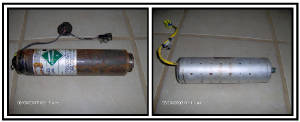
|
| Click picture to enlarge |
In the late '80s and early '90s manufacturers began using compressed
gas inflators rather than the pyrotechnic type in their passenger's and side airbags.
These are simply storage containers that hold 3000 - 4500 psi of compressed nitrogen
or argon gas. These cylinders come in many different shapes and sizes depending on the application. Like the nitrogen
we seen in the bumper struts argon is non- flammable and non-explosive, but it has a very high rate of expansion when exposed
to very little heat.
Most of these, when heated, will deploy the airbag as a normal
deployment and the nylon bag will melt away.
Though rare, like the pyrotechnic type these have been reported to explode,
throwing shrapnel in all directions.
In one report they found 32 pieces of metal and nylon bag and in trying to reconstruct
the cylinder they made up approximately one fourth of it.
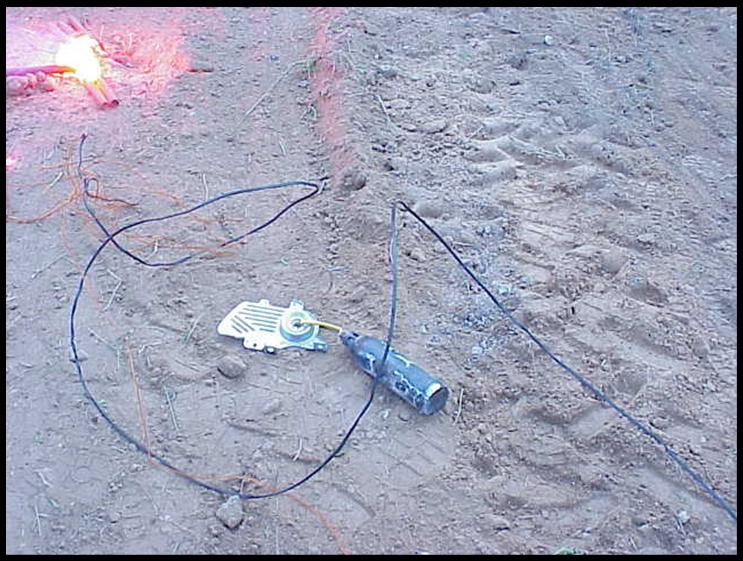
|
| Click picture to enlarge |
With the help of Capt. Gary Rhodes of the Ft Worth bomb squad, we timed
some of these canisters to see how much heat they could stand and how long before they deployed.
We used electric matches to ignite traffic flares as our source of heat and a stop
watch to time them.
The average time from ignition to deployment was 20-22 seconds.
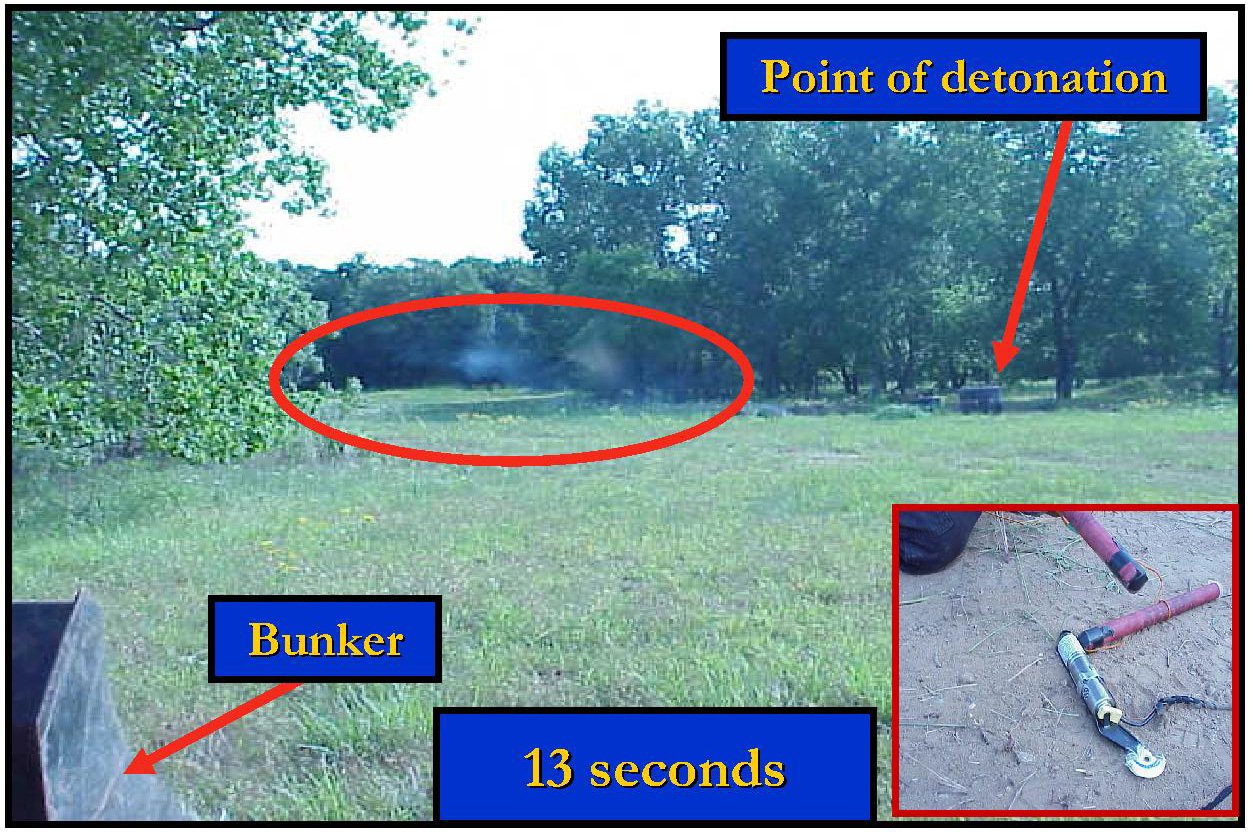
|
| Click picture to enlarge |
We did the same with the smaller canisters from door mounted airbags.
The average time from ignition to deployment was 13 second.
As you can see in a vehicle fire we have no time to think
about it. When the heat reaches the canister the airbag is going to deploy in some manor.
In our latest test we wanted to see how often we can expect a catastrophic
failure of one of these, thanks to two airbag recalls, we were able to gather many inflators, each identical and exposed them
to the same heat.
The passenger's airbag inflators were all 8" long and 2 1/4" in diameter and contained 3000 psi of argon gas.
When exposed to the heat of one flare on each side, placed in the middle of the canister and two inches away from it,
92% of them released their gas like a normal deployment.
6% ruptured the side of the canister, which could possibly
have been a result of the heat being concentrated to the one area of the cylinder. But we
now know that they are capable of rupturing rather than deploying.
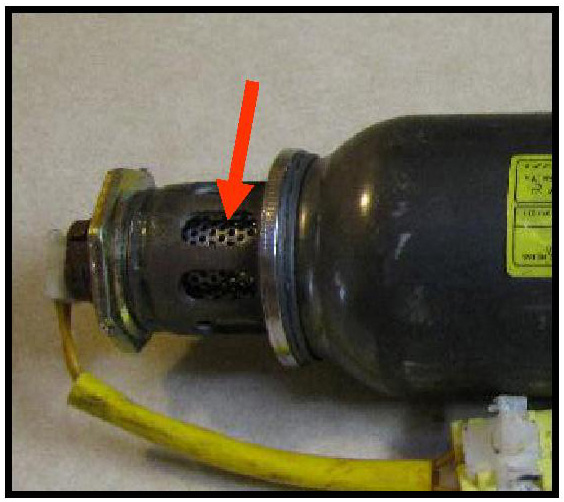
|
| Click picture to enlarge |
2% actually blow out small bits of shrapnel which we found was
pieces of the screen seen in the picture.
Though this was not a scientific, or even an accurate test, we do know
that these can be a very real danger to the firefighter.
Also note that in later studies we have found the this particular cylinder is the
heaviest built of all we have found.
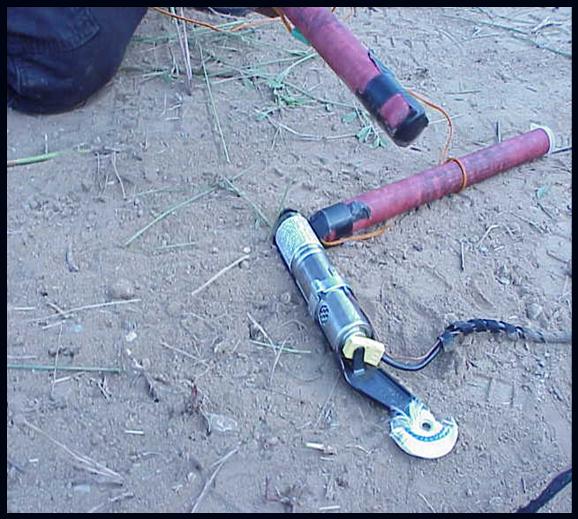
|
| Click picture to enlarge |
We then exposed twenty Audi door mounted airbag inflators to the heat
of one flare.
One exploded into three pieces.
Two ruptured the side next to the flare.
Seventeen released their gas like a normal deployment.

Again, Never
Enter The Vehicle With Any Part Of Your Body until every part is cooled.
Notice that everyone of the forty inflators we used had some type of
reaction to the heat.

Let's look at how these affect our present day training.
As we seen in the introduction, we are taught to:
Wash out under the vehicle, with a straight stream from a long distance,
while cooling the gas tank area.
Approach the vehicle diagonal to one corner, doing a quick knock down
and cooling the tires.
Reach through the window or open the door and in a circular motion put
the fire out.

From what we have studied; let's see what it looks like with
the firefighter standing in the door opening.
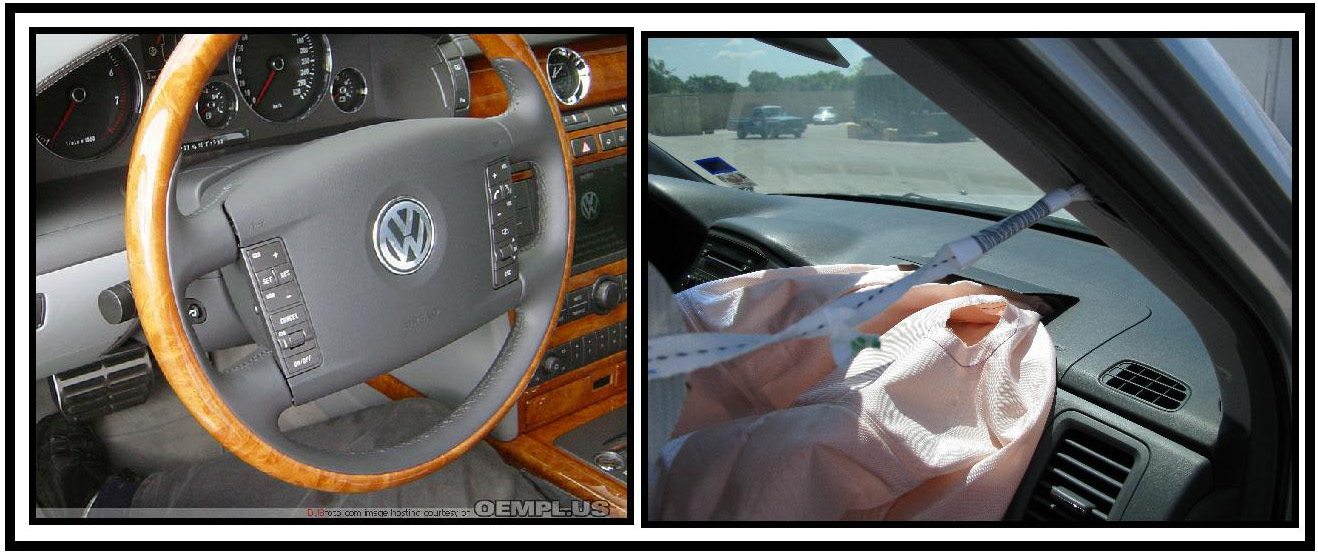
|
| Click picture to enlarge |
In front of him:
Could be a dual stage driver's or passenger's airbag deploying.
Or, a pyrotechnic inflator housing blowing out through the roof.
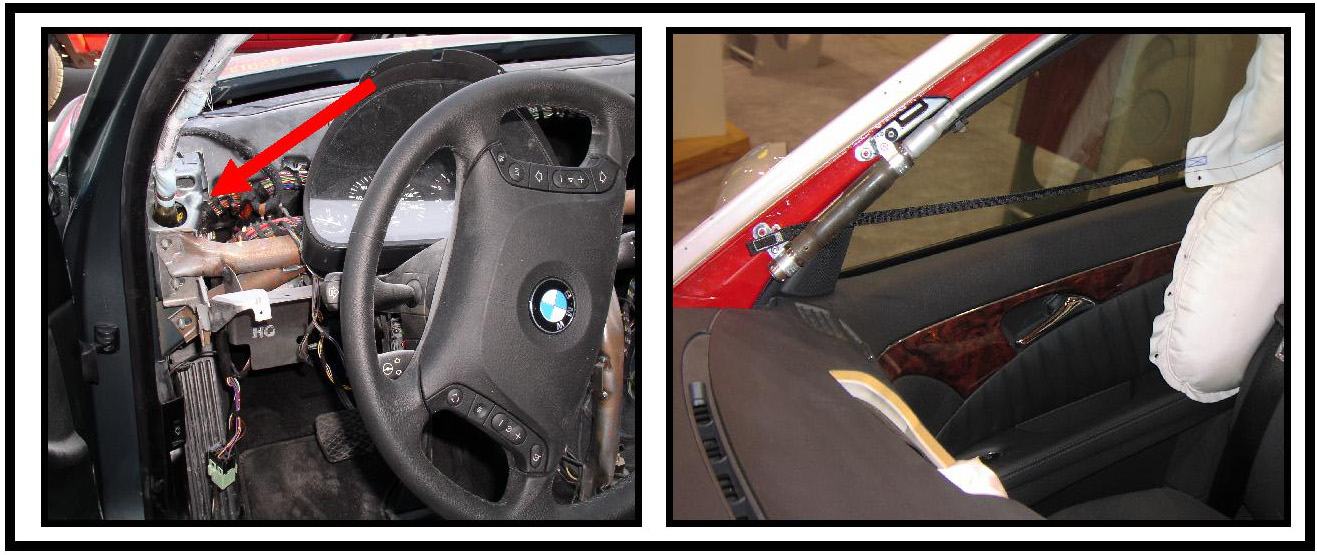
|
| Click picture to enlarge |
To one side of him:
Depending on the make and model
There could be an exploding canister in the A post or A pliar area.
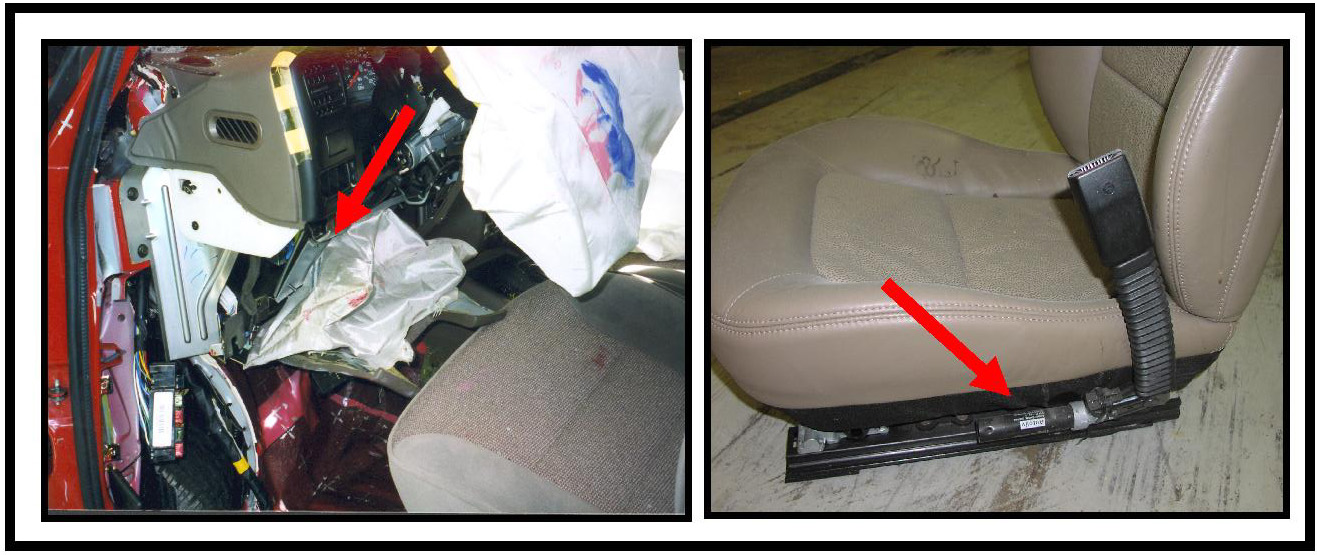
|
| Click picture to enlarge |
In the middle of his legs:
There could be a knee airbag and a pyrotechnic seat belt tensioner
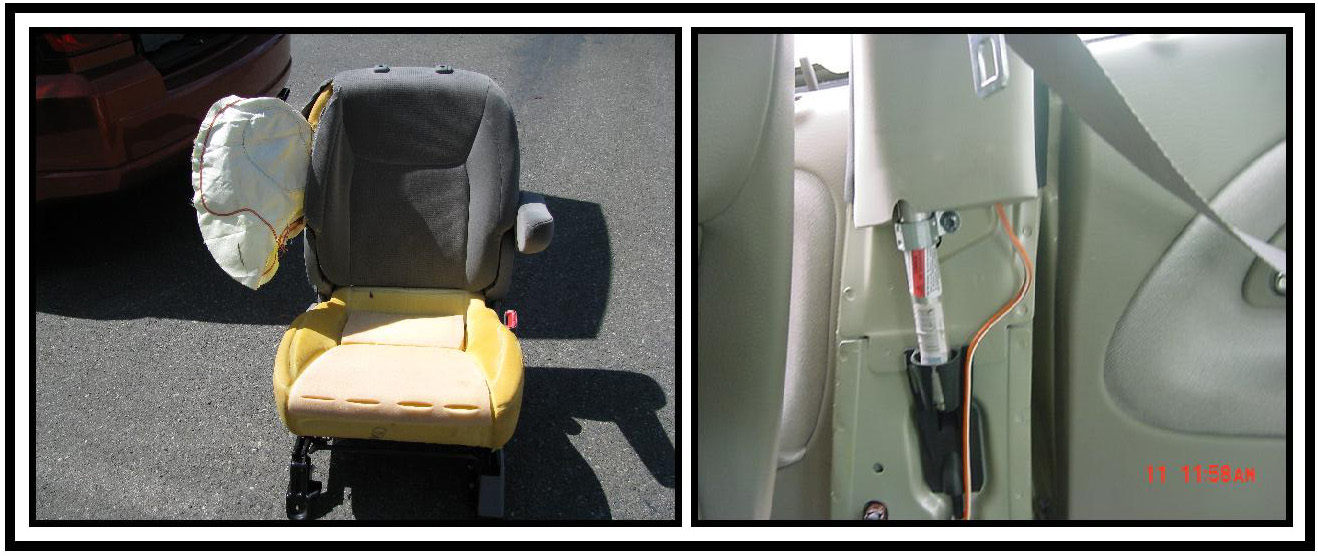
|
| Click picture to enlarge |
To his other side:
There could be a seat mounted airbag and another type of seat belt tensioner.
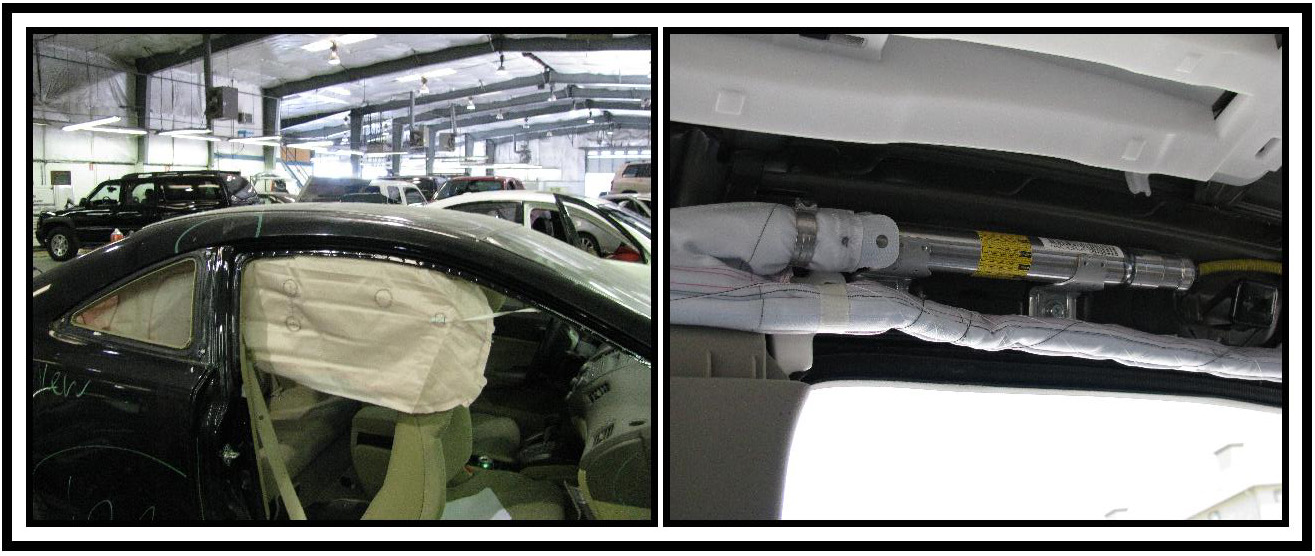
|
| Click picture to enlarge |
Over his head:
There could be a curtain airbag deploying or a canister exploding.
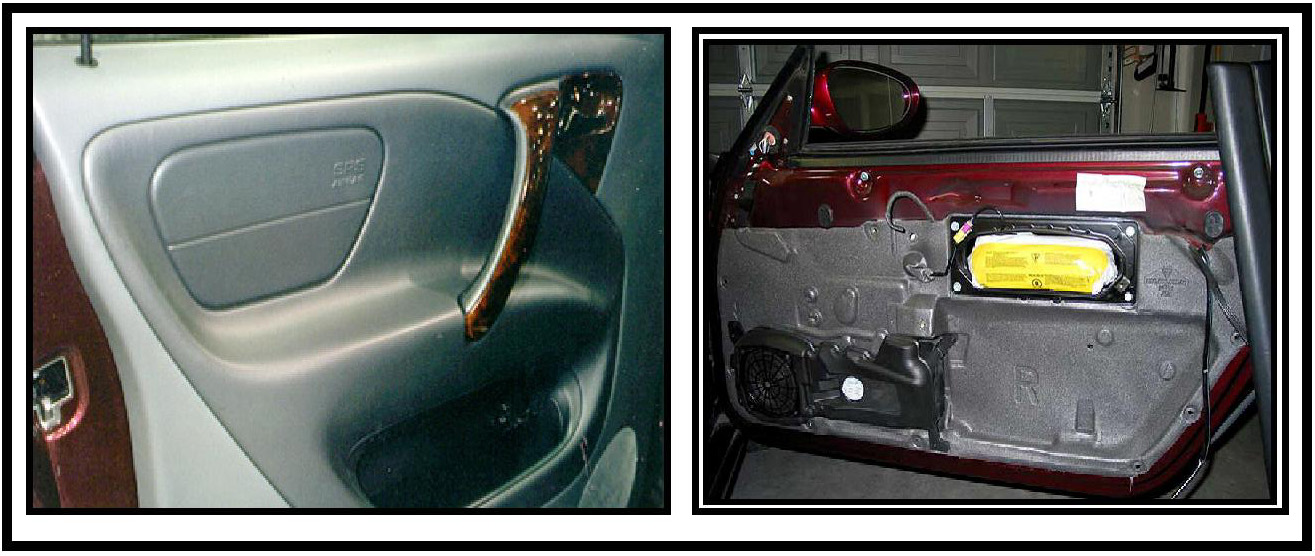
|
| Click picture to enlarge |
Behind him:
Could be a door mounted airbag or exploding canister.
And remember that this is just the front door opening, there are many
others in the rear seat area and in the C & D posts.
The video below is not staged, it is a randum clip from youtube
that will show the worst danger of all of these.
Video - We are actually teaching him that this is where he should be standing to fight a vehicle fire.
Is it time to change our training Yet?
|

